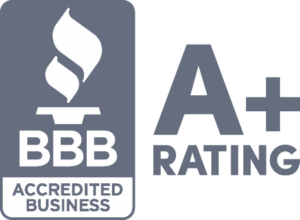› Business Loans › Offer Financing to Customers
Offer Financing to Customers - Close More Sales & Make More Profit
Let’s Work To Grow. Together.
Close Even More Sales
Upsell Existing Customers
Earn Residual Revenue
Long Term Relationships
Offer Customer Financing For Your Business
TL;DR (Too Long; Didn’t Read) summary for Offering Customer Financing guide:
💳 What is Customer Financing? Allows customers to purchase goods or services without upfront payment, often through Buy Now, Pay Later (BNPL) models.
📈 Boosts Accessibility: Makes products more accessible to a broader range of customers, potentially increasing sales.
🤝 Improves Satisfaction: Enhances customer satisfaction by providing flexible payment options.
🛍️ Point-of-Sale Options: Financing can be offered directly at the point of sale for convenience.
🔗 Partner or In-House: Businesses can partner with a financing provider or manage the program in-house.
📜 Transparent Terms: Clear communication of terms and conditions is essential to build trust.
💡 Cash Flow Impact: Businesses should assess how financing might affect their cash flow.
⚠️ Manage Risks: Be prepared for potential customer defaults and administrative requirements.
💼 Revenue Growth: Thoughtfully implemented customer financing can enhance appeal and drive revenue.
To learn more about how you can offer financing for your customers, please continue reading:
Providing flexible payment options, such as offering financing to your customers, can significantly attract more customers and boost revenue. One popular option is to offer customer financing, which allows your clients to purchase items on credit, typically using short-term financing options.
Whether you’re a startup or an established business looking to expand your customer base, integrating financing options can be a game-changer for your bottom line. Customer financing is particularly beneficial for small businesses that sell large-ticket items, such as manufacturing equipment, cars, and heavy-duty office equipment.
We assist all types of small businesses in all industries with:

Merchant Cash Advance

Business Line of Credit
Invoice/ Receivables Factoring

SBA Loans

Business Term Loans

Revenue-Based Financing
Equipment Financing
Plus more
This guide provides insights on how to offer customer financing for small businesses, including the available options, benefits, drawbacks, and implementation strategies.
Specifically, we'll answer these questions and more:
We Excel Because:
What is Customer Financing?
Customer financing refers to providing financial assistance to customers to help them purchase goods or services without payment upfront. The payment process involved in customer financing typically includes steps such as automating invoices and sending payment reminders, which can be streamlined through accounting software. Because customer financing happens at the point of sale (POS), it’s sometimes called POS loans or POS financing. Customer financing in retail is sometimes called consumer financing or retail financing.
This can take the form of installment plans, loans, or credit options businesses offer their customers. One of the most common forms of customer financing is the Buy Now, Pay Later (BNPL) model. The customer can continue making payments after the service is completed while the business receives full payment upfront.
By offering financing to customers, businesses can make their products more accessible to a broader range of customers who may not have the funds available to make a purchase upfront. This can help increase sales and customer satisfaction, allowing individuals to spread out payments over time. Customer financing is a common strategy used in retail, automotive, and electronics industries to encourage sales and build customer loyalty.
Customer Financing Facts & Statistics
According to a study from Citizens Financial Group, 76% of U.S. consumers are more likely to make a retail purchase if a payment plan backed by a simple and seamless point-of-sale experience is offered. (Source: Business Wire)
According to an article from Entrepreneur, working with a finance provider increases customer purchasing power, significantly increasing average transaction size. (Source: Enterpreneur)
According to Yahoo! Finance, consumer demand for Buy Now, Pay Later options will continue to rise, especially in the eCommerce sector. (Source: Yahoo! Finance)
According to an article from Techblocks, businesses saw a 32% increase in conversion rates when they offer financing to customers. (Source: Techblocks)
How does Customer Financing work?

Customer financing is when a business offers payment plans or loans to customers to help them purchase products or services. This allows customers to make purchases they may not be able to afford upfront, spreading the cost over time.
Typically, the process goes like this:
Your business offers financing options to your customers.
The customer provides necessary personal and financial information.
The lender reviews the application and assesses the customer’s creditworthiness.
If approved, terms of the financing agreement are provided to the customer.
The customer agrees to the terms and conditions.
Customers pay off the amount according to the financing terms.
Failure to make payments can result in penalties or legal action by the lender.
There are two main types of customer financing.
In-house Financing
In-house financing involves setting up payment terms directly with the business, allowing customers to make installment payments for their purchases. This method requires the company to manage the entire process, from approving payment plans to collecting payments. By offering in-house financing, businesses can attract more customers who prefer installments over upfront payments. In-house financing requires the business to have its own credit policy and process for managing accounts receivable.
One key advantage of in-house financing is the ability to tailor payment plans to suit individual customer needs. However, this approach also comes with increased responsibility for managing credit checks and ensuring timely payments. In-house financing comes with higher administrative burdens for the business, including managing credit checks and collections. In addition, in-house financing increases the risk if customers fail to pay back their loans, impacting cash flow. Businesses must carefully assess the financial risk associated with providing installment options to customers.
Third-party Financing
On the other hand, a third-party financing provider offers businesses pre-built payment plan programs that integrate seamlessly into their existing systems. Using a third-party provider allows businesses to offer flexible payment plans to customers without assuming the risks associated with lending. Third-party financing providers handle credit checks and payment collections on behalf of businesses. Businesses that use third-party financing do not need to conduct credit checks, as this is handled by the lender.
Partnering with third-party providers can reduce administrative burdens and help manage cash flow effectively. These services handle the approval process, payment collection, and interest rates, reducing the burden on businesses. While third-party financing simplifies the application process and reduces non-payment risk, businesses may have less control over payment terms and rates. Third-party financing typically charges a fixed transaction fee and a percentage of the sale, impacting revenue.
Examples of third-party financing providers include:
United Capital Source Referral Progam.
PayPal Credit.
Affirm.
Klarna.
Afterpay.
How do I choose which type of Customer Financing to Use?
Small business owners should consider various factors when deciding between in-house and third-party customer financing for their small business.
Current Financial Situation
Offering in-house financing typically involves a more significant investment. Your business is responsible for running credit checks, providing the funding, and following up with billing and payment processing. This typically requires hiring additional staff to handle the increased workload.
Implementation
In-house financing gives businesses more control over terms and processes but requires significant resources. On the other hand, third-party financing can be quicker to set up and may offer expertise in managing credit risk, but it comes with additional fees and potentially less flexibility in customization. Ultimately, the choice between the two options depends on the business’s specific needs and capabilities.
Cost
Third-party financing typically carries a higher cost in terms of interest rates and fees. On the other hand, in-house financing requires a more significant investment and can restrict cash flow. With third-party finance, your business receives funds from the financing company. You won’t see that revenue for in-house financing until your customers make their payments.
Scalability
Third-party customer financing solutions are typically built to be scalable. This is important as your business grows and expands, offering additional products and sales channels. In-house financing may be more challenging to scale as it requires additional resources.
Risk
Offering any customer financing carries some risk, but in-house financing typically carries a higher level of risk. Third-party financing companies normally pay your business in full and assume the risk of non-paying customers.
Flexibility
In-house customer financing typically offers more flexibility as the company has more control over the terms and conditions. Third-party financing may have stricter guidelines and requirements, limiting the flexibility for both the company and the customer. However, third-party financing can provide access to additional resources and expertise that in-house financing may not offer.
Ultimately, the decision between in-house and third-party customer financing will depend on your specific business needs, goals, and resources. It may be beneficial to consult with financial advisors or experts to help make the best choice for your small business.
Our Customer Financing is as Efficient as our Lending Process.
We discuss our goals and look at the road ahead while also reviewing compatible processes & systems on a quick phone call.
Then we iron out a few kinks, like revenue goals, marketing goals, processes & escalation paths, roles & responsibilities along with some terms and conditions.
Lastly, we can enter into our agreement and begin the boarding process!
How can I offer Customer Financing at my business?
Follow these steps to provide customer financing at your small business.
Step 1 – Decide if Customer Financing is Right for Your Business
Deciding to offer customer financing at your business requires careful consideration of your target market, cash flow, and risk tolerance. Offering customer financing can be a good idea when you want to:
Attract more customers.
Increase sales.
Provide flexibility for larger purchases.
Stand out from competitors.
Build customer loyalty in the long run.
Step 2 – Choose a Financing Service
If you opt for third-party financing, you must choose a provider. There are several options to consider. Some are better suited for business-to-consumer retail transactions, while others focus on customer financing for business-to-business transactions.
You could potentially offer customer financing through United Capital Source’s affiliate program. For more information, please fill out the form or call us at 1 (855) WE-FUND-U.
Small businesses that opt for in-house financing should start implementing their process by establishing a credit check process and developing a payment processing system to handle repayment.
Step 3 – Integrate Financing Options Across All Sales Channels
After deciding on a financing provider, the next step is seamlessly integrating the customer financing option across all sales channels. Start by working closely with your chosen financing service to set up the necessary infrastructure. This may involve implementing a plugin or widget on your e-commerce website, integrating with your point-of-sale system for in-store transactions, and ensuring compatibility with any other sales channels you utilize.
Ensure the financing option is clearly available at:
Your in-store point-of-sale.
Website checkout pages.
Product pages.
Additionally, train your sales team on how to effectively offer and process financing options to customers. By ensuring a smooth and consistent customer experience across all channels, you can maximize the benefits of offering financing and increase sales opportunities.
Step 4 – Advertise the Customer Financing Options
Advertising the new customer financing option is crucial to ensure that potential customers know the flexible payment options available to them. By promoting this financing option through various marketing channels such as social media, email campaigns, and website banners, businesses can attract more customers who may have been hesitant to purchase due to financial constraints.
Highlighting the benefits of financing, such as low monthly payments or interest-free periods, can entice customers to purchase something they might have otherwise put off. This increases sales and builds customer loyalty by showing that the business understands and accommodates their financial needs.
What are the advantages of offering Customer Financing?
Offering customer financing can attract new customers who cannot make large purchases upfront. This expands the business’s market reach and increases sales opportunities. Providing financing options can differentiate a business from its competitors.
Customer financing encourages customers to spend more by breaking down larger purchases into manageable installments. This leads to higher average order values (AOV) and boosts business revenue.
Providing financing options enhances customer satisfaction by offering flexibility in payment methods. Customers appreciate the convenience and are more likely to return for future purchases.
What are the disadvantages of offering Customer Financing?
Offering customer financing can have several disadvantages for businesses. One major drawback is the potential risk of non-payment or default by customers. If customers cannot make their payments on time or at all, businesses may lose money and resources.
Providing financing options can also increase administrative costs and complexity for the business. Managing payment schedules, tracking outstanding balances, and dealing with collections require additional time and resources.
Moreover, offering customer financing may increase the business’s financial risk if economic conditions change or customers face financial difficulties. While customer financing can attract more customers and increase sales, it also comes with risks that businesses need to consider carefully.
PROS
CONS
Frequently Asked Questions
Here are the most common questions about offering customer financing for small business.
How do I handle rejections or concerns about Customer Financing?
One of the potential drawbacks of offering a customer financing program is pushback from customers. The following strategies can help you manage customer complaints or rejections.
Addressing Concerns: When customers raise questions or express doubts about customer financing, it’s crucial to affirm their concerns. Listen actively and provide clear explanations to put any uncertainties they may have to rest. Prepare ahead of time with answers to any questions that may come up.
Building Trust: One way to handle rejections is to highlight the benefits of customer financing. Explain how the process works, acknowledge the potential risks and costs, and assure customers that their financial well-being is a top priority.
Flexible Options: Offering flexible payment plans can also help alleviate concerns. By providing options that cater to different financial situations, you can make it easier for customers to say yes to your financing offers.
How much does Customer Financing cost Small Businesses?
Costs for providing customer financing can vary significantly depending on your type of financing and financing provider. In many cases, the small business pays a transaction fee, which can be a flat fee or a percentage of the sale amount. This is especially true for Buy Now, Pay Later options with zero interest or low interest. Businesses must evaluate different financing providers based on costs, transaction limits, and integration with existing systems.
Other potential costs could include:
- Interest fees: Small businesses may incur interest fees on the financing they provide to customers.
- Administrative costs: Administrative costs are associated with managing customer financing programs, such as processing applications and payments.
- Default risk: Small businesses may face losses if customers default on their financing agreements.
- Opportunity cost: Offering customer financing ties up capital that could be used for other business purposes.
- Compliance costs: Small businesses must comply with regulations related to offering customer financing, which can result in additional expenses.
Are there Customer Financing options for No Credit or Bad Credit?
Yes, some customer financing providers offer solutions tailored to individuals with poor credit histories. These options may include higher interest rates or stricter terms but can still provide opportunities for customers who might not qualify for traditional financing. Ask your third-party financing company about options for no credit or bad credit.
What are my alternatives to Customer Financing?
Small business owners have several options if they decide that in-house or third-party financing is not a good fit.
Credit Cards: Providing payment processing services that allow customers to make purchases using credit cards enables them to break up purchases into smaller payments. You could potentially include a credit card surcharge to offset the transaction fees.
Payment Plans: Another option is to offer a simple payment plan that gives your customers a set period to pay, usually 30, 60, or 90 days. This usually involves invoicing the customer and recording the transaction in accounts receivable. You could also use invoice factoring to convert the unpaid invoices into immediate cash flow.
Layaway: A layaway program allows customers to reserve an item by making a deposit and then paying off the balance over time before taking possession of the product. This option is beneficial for those who may not have access to traditional financing or prefer to pay in installments without accruing interest. Customers can typically pick up their item once the full payment is made.
Loyalty Programs: Implementing a loyalty program can serve as an alternative to customer financing as it incentivizes repeat purchases and customer retention. By offering rewards, discounts, or exclusive perks to loyal customers, businesses can encourage continued patronage without the need for traditional financing options. This can help build long-term relationships with customers and drive sales growth.
Coupons & Discounts: Offering coupons and discounts can be a great way to incentivize customers to purchase large ticket items. By providing discounts, customers may feel more inclined to make a purchase, especially if they feel they are getting a good deal. This strategy can help increase sales and attract customers who may have been hesitant to make a big purchase otherwise.
How to Offer Customer Financing for Small Business - Final Thoughts
Offering customer financing for small businesses can be a strategic way to increase sales and attract new customers. By providing flexible payment options, businesses can cater to a broader range of clients and boost their revenue.
It’s essential to carefully consider the terms and conditions of the financing program to ensure it aligns with the company’s financial goals and capabilities. Customer financing can be a valuable tool for small businesses looking to grow and thrive in a competitive market.
Contact us to learn more about offering customer financing to your small business clients using our business loan affiliate program.





